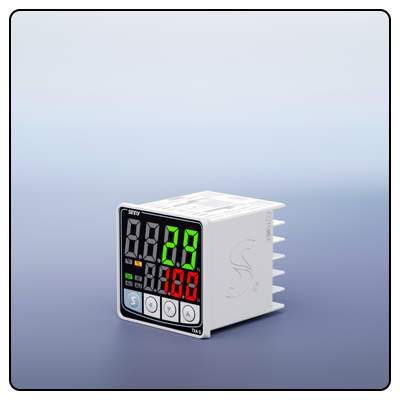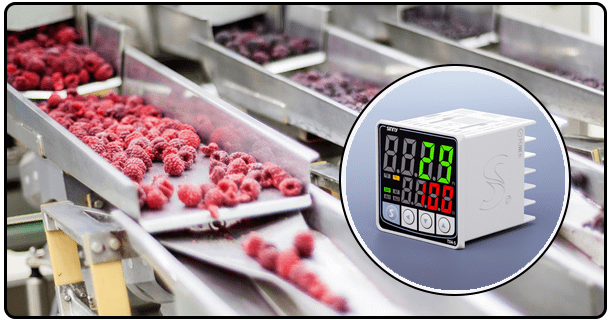How to Fine-Tune Your PID Temperature Controller Settings
Master the art of PID temperature controller fine-tuning with our expert guide! Learn to effectively set P, I, and D parameters to optimize system performance for maximum effectiveness as you explore advanced tuning techniques and industry best practices - elevate your industrial automation processes today.
1. Introduction
PID (Proportional-Integral-Derivative) controllers play an essential part in industrial automation by maintaining precise temperature regulation. Achieving peak performance through fine-tuning these controllers requires understanding their parameters, initial setup process and fine-tuning proces
Understanding PID Parameters mes In order to efficiently fine-tune a PID controller, it's essential that one understands its three core parameters - Proportional (P), Integral (I), and Derivative (D).
Proportional (P):
The proportional term governs how a controller responds to current errors - differences between setpoint and process variable values that fall outside their desired limits - by increasing proportional gain or by making errors more aggressively addressed, though too high of an increase may cause system instability.
Integral (I):
An integral term sums past errors to correct for any remaining steady-state error in real time, with adjustable integral times changing how quickly controllers can eliminate this error; excessive integral action could lead to oscillations if too aggressive of action taken against it occurs.
Derivative (D):
The derivative term predicts future errors based on the rate of change of process variables. It helps dampen response by reducing overshoot, improving stability and damping out response spikes; its incorrect tuning may make systems too sensitive or too slow in responding.
Initial Setup and Baseline Tuning
2. Gather the Necessary Information:
Start by understanding your system dynamics and collecting relevant data such as historical performance data or initial testing results. Understanding its response characteristics will assist with effective tuning.
Start out with conservative values for P, I and D. A common approach is to set both integral and derivative terms to zero and gradually increase proportional gain until oscillation occurs - this provides a baseline from which adjustments can be made further along.
Fine Tuning Process
Step-by-Step Tuning Procedure:
Incremental Adjustments: Gradually increase proportional gain until system begins to oscillate; note this value as critical gain.
Integral Adjustment: Introduce an integral term to eliminate steady-state error by gradually increasing integral time until system stabilizes and then decrease it until system stability has been attained.
Derivative Adjustment: Add the derivative term to dampen oscillations and improve stability, then fine-tune this parameter until achieving a seamless response.
Common Tuning Methods:
Ziegler-Nichols Method:
For this approach to tuning PID parameters, set both integral and derivative gains equal to zero before increasing proportional gain until sustained oscillations begin to take place; critical gain and oscillation period values will then be used as PID parameters.
Tyreus-Luyben Method: Similar to Ziegler-Nichols but using different formulas for setting PID parameters. Usually results in more stable control.
Cohen-Coon Method: This approach requires conducting an open-loop step response test, using its results to calculate PID parameters. It's especially useful in systems with significant time delays.
3. Practical Tips and Best Practices
Avoiding Common Pitfalls:
Take extra caution with over-tuning and under-tuning adjustments - excessive overtuning could cause oscillations while undertuning may slow response times significantly if overdone; constantly check on how your system responds after each adjustment made to it.
oscillation and instability are common problems; if this happens to you, it might indicate either that the proportional gain or integral action are too strong for the proportional gain to support properly.
Software Tools Can Facilitate Tuning:
Software tools are invaluable tools in streamlining the tuning process. From automated tuning functions and visual feedback on system performance, these programs such as MATLAB, LabVIEW and proprietary PID tuning software help streamline this step significantly.
Real World Examples and Case Studies Are Also Provided Below
Industries Applications:
In chemical processing industries, temperature regulation is vital in order to guarantee product quality and safety. A case study at one plant demonstrated how fine-tuning PID settings improved consistency of critical reaction processes leading to greater yields with reduced waste output.
Food production companies need to maintain ideal temperatures during cooking and storage to protect food safety, so one food processing firm successfully implemented PID controllers to manage optimal temperatures; as a result, their product quality improved while complying with safety standards.
User Testimonials:
Industry professionals often recognize the significance of experience when it comes to PID tuning. One engineer from a pharmaceutical company noted how fine-tuning their PID controllers significantly reduced batch variability and enhanced overall production efficiency; another user from an HVAC system manufacturer shared how advanced tuning methods provided more stable climate control within their systems.
4. Advanced Tuning Techniques
Adaptive and Self-Tuning Controllers:
Adaptive PID controllers have the unique capability of real-time parameter adjustment to respond quickly and seamlessly to changing process conditions, providing optimal performance without manual intervention. Such controllers are especially beneficial in processes with large levels of variance as they maintain optimal performance without human oversight.
Self-tuning PID controllers use algorithms to continuously optimize their parameters, eliminating manual tuning requirements. While self-tuning PIDs offer some advantages over manual tuning methods, it is still essential that their limitations and configuration meet your application.
Implement Machine Learning:
Machine learning algorithms can help improve PID tuning by using historical data and process trends to predict optimal settings based on PID tuning algorithms, leading to more precise control and improved system performance. Implementation requires having an in-depth knowledge of both your process as well as any applicable machine learning algorithms used.
Maintenance / Regular Adjustments will need to take place regularly after machine learning implementation has taken place.
Regular Monitoring Is Important:
Monitoring PID controller performance on an ongoing basis is vital to ensure optimal system functioning. Careful inspection should be made of system responses in order to stay within desired parameters; regular reviews and adjustments can address any degradation over time.
Documenting and Record-Keeping:
Keep detailed records of your tuning efforts, from initial settings and adjustments through system responses, so as to facilitate troubleshooting issues as well as future tuning initiatives. Best practice recommends keeping either paper logbooks or electronic logs of changes made with timestamps and specific notes on what has changed over time.
5. Conclusion
Summary of Key Points:
Understanding and optimizing the PID temperature controller's tuning parameters are integral for precise temperature regulation, including proportional, integral and derivative parameters as well as its methodical tuning process can dramatically enhance its performance and help achieve precise temperature regulation.
- PID Temperature Controllers: Essential Features and Specifications
- Explore the Importance of PID Temperature Control in Manufacturing























